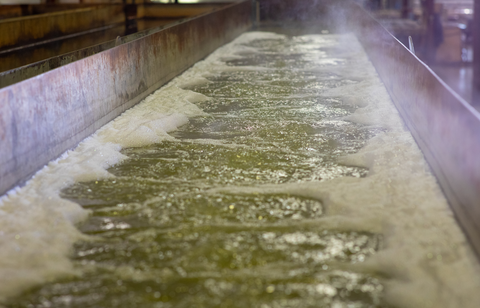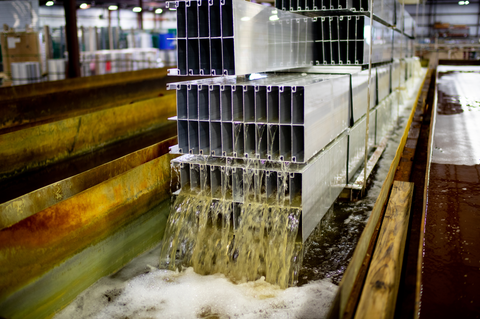Aluminum Treatment Process: The Interstate Way
- Carrie Crocker
- Apr 6, 2021
- 1 min read
Interstate's in-house chemical etching and corrosion treatment tanks
All of our aluminum used in the manufacturing of highway guide signs, regulatory, or warning signs goes through a chemical etching and corrosion treatment process. In Interstate SignWays’ 169,000 square foot facility, we house our chemical etching and corrosion treatment tanks.
Each piece of flat sheet, increment and extruded panel aluminum is dipped into a chemical bath. This process etches the aluminum panel’s surface to ensure better adhesion of the 3M reflective sheeting as well as provides increased corrosion protection.
This in-house capability enables us to provide high quality 3M warranted DOT signage and maintain a higher level of quality control.
The Process
The aluminum is loaded onto a rack-lift system that enables it to be maneuvered from tank to tank.
The aluminum is then lifted and dipped into a 120-140 degree alkaline bath to soak for 10-15 minutes.
Next, it is dipped into two rinse tanks (in & out) to clean off the alkaline solution.
Then, the aluminum is dipped into a fourth tank that holds a de-oxidizing agent for 3 minutes. (Aldeox 171)
After being de-oxidized, the aluminum enters tank to rinse off the de-oxidizing agent (in & out).
Next, the aluminum enters a tank filled with chromic acid solution that will help prevent it from oxidizing in the future.
Last, the aluminum is rinsed in one last tank and starts the drying process before assembly.
How Its Made Video Series
Watch in more detail on our manufacturing process in this quick video about the aluminum treatment process.
Need MUTCDs Fast?
After the aluminum is dipped, its ready for your signage needs! Check out our easy-to-use online MUTCD Store.

















Comments